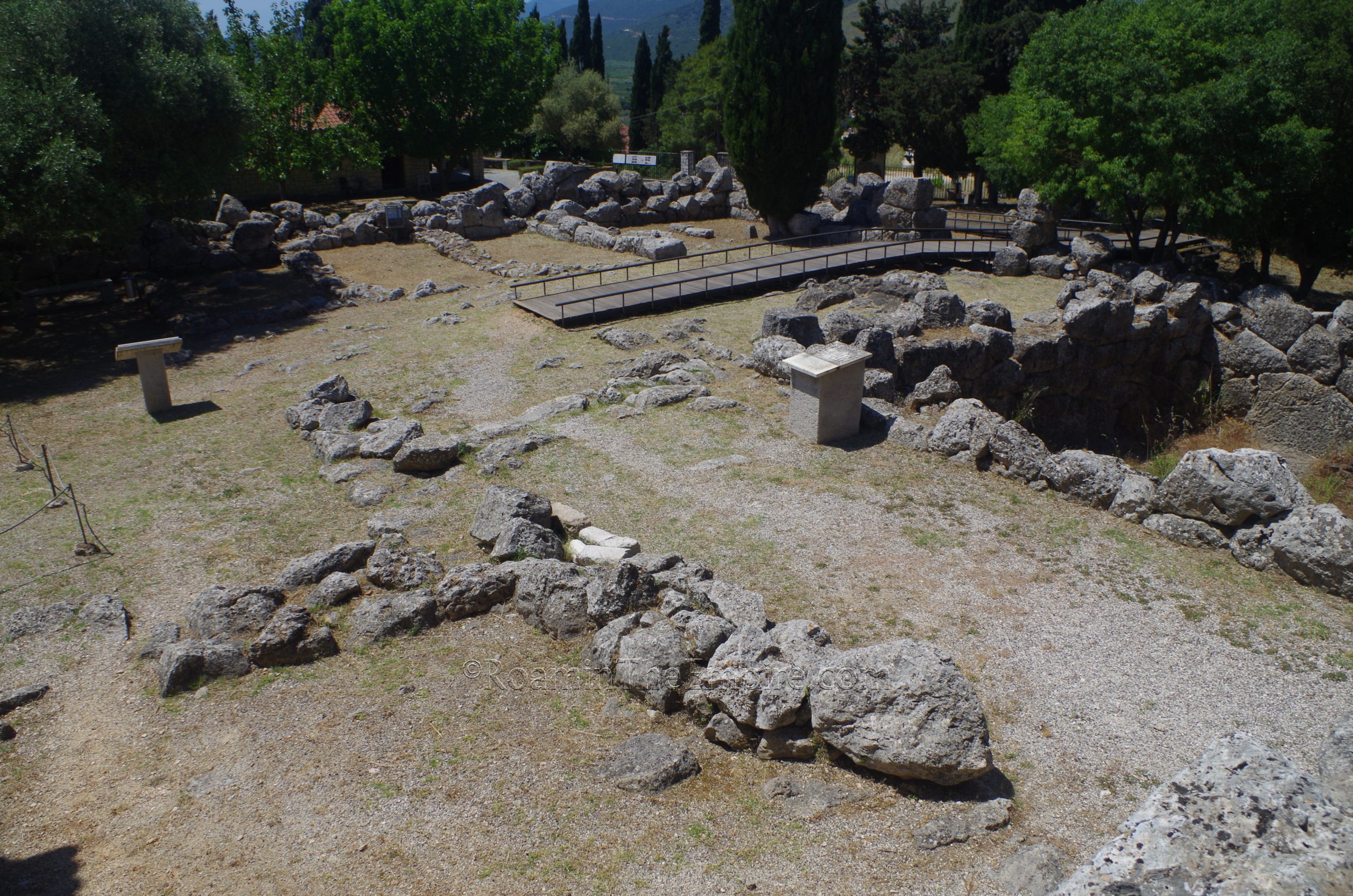
Most Recent Visit: May 2021
There are a couple interesting sites worth seeing in the hinterland areas around Nicopolis and Ambracia. Since the Nicopolis aqueduct only takes up a few hours, these are also good options to see in conjunction with that.
The first of these is the so-called Necromanteion of Acheron, the famed oracle of the dead, also called the Necromanteion of Ephyra. Though not the only oracle and shrine associated with Hades and the underworld, it was perhaps the most significant and important. It is described as being constructed along the Acheron River in Thesprotia. The Acheron, the river of woe, then met with the Phlegethon, the river of fire, and the Cocytus, the river of lamentation, and entered into the underworld nearby. Literary mention of the Necromanteion dates back to the Homeric epics, as the location at which Odysseus is able to descend into the underworld and consult with Tiresias. It is mentioned in Herodotus as well, when the Thesprotian tyrant Periander consults the oracle to learn the location of the deposit of a deceased friend, and must appease his dead wife in order to gain access to the information.
This supposed site of the Necromanteion of Acheron fits the general description given in the ancient sources; it is located in the territory of ancient Thesprotia and is situated close to the modern course of the Acheron River, which today still bears the name of the ancient river. Upon the discovery of the site in the mid-20th century CE, it was declared to be the Necromanteion due to this location as well as the interpretation of some similarity in the structure found to descriptions given in ancient sources. The lake mentioned in the vicinity in the ancient sources no longer exists, having been drained in the 1960’s.
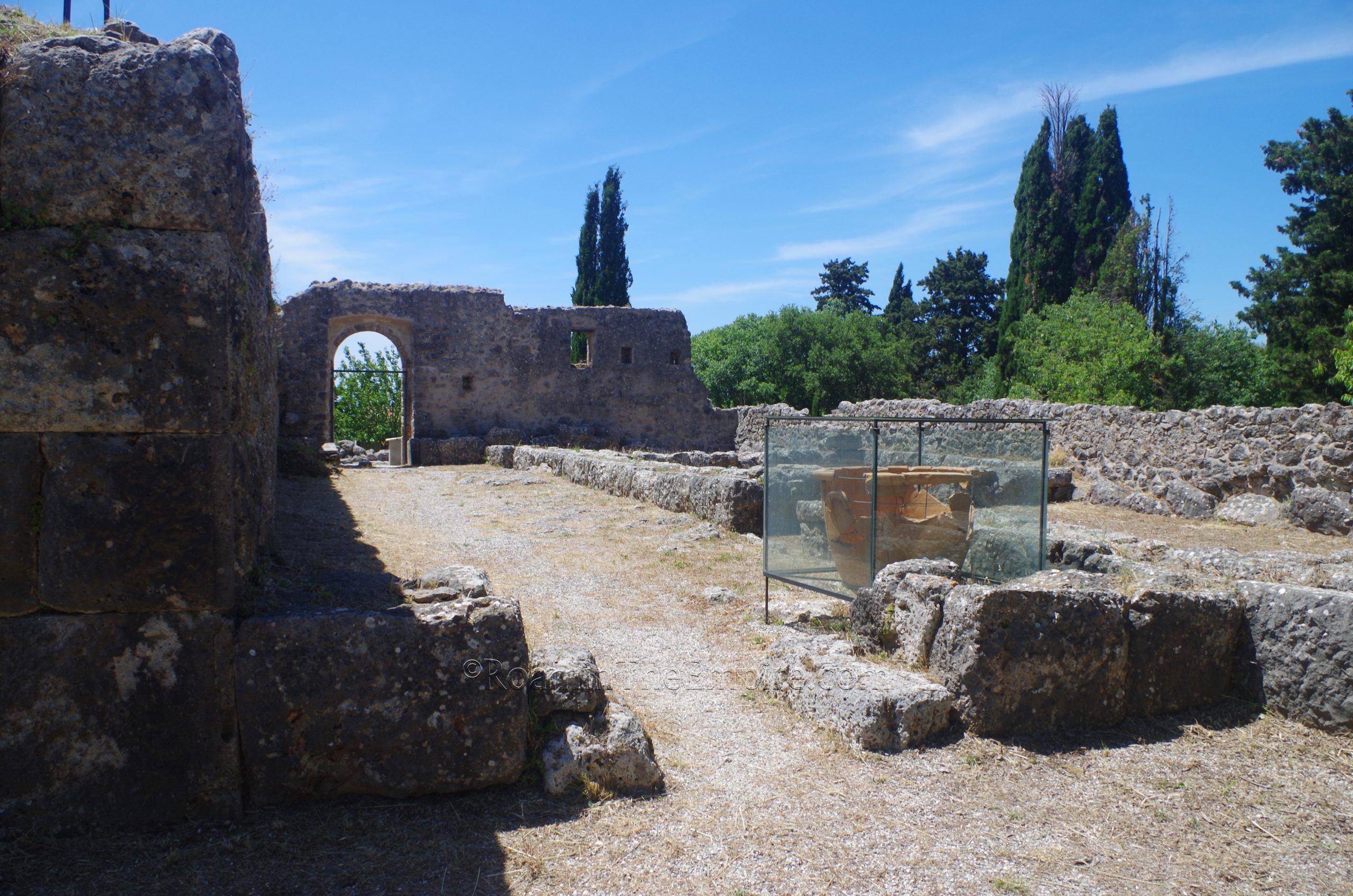
There have been some points made that detract from the interpretation of this site as the Necromanteion. The lack of any significant archaeological evidence of the actual structure dating to before the 4th century BCE. Having been described in the Homeric epics, the Necromanteion of Acheron would seemingly have to have been in existence since at least the 8th century BCE. Though there is evidence of a children’s necropolis on the hill dating back to the 14th and 13th centuries BCE, which has been seen as possibly contributing to the idea that the area was associated with death and funerary practices. Some votives dedicated to Persephone have been found in a deposit at the foot of the hill. Some archaeological finds within the site, however, have been interpreted as aligning more with a domestic space than a religious space. As such, more recent interpretations of the site seem to favor this as being a fortified Hellenistic farmhouse. Despite this, the conclusive identification of the site is still a matter of some debate, and the site is still widely referred to as the Necromanteion of Acheron, even among the literature of the Greek Ministry of Sports and Culture.
The site seems to have suffered some destruction during the Roman reprisals throughout Epirus in 168-167 BCE, and evidence of an actual assault (Roman pilum points) have been found. Following this, some Roman period occupation seems to have occurred in the courtyard area. A church was built on the location in the early 18th century CE. This is another site that doesn’t really fall under something with any significant Roman occupation, but nonetheless has an interesting, if not controversial, role in the archaeology of the area.
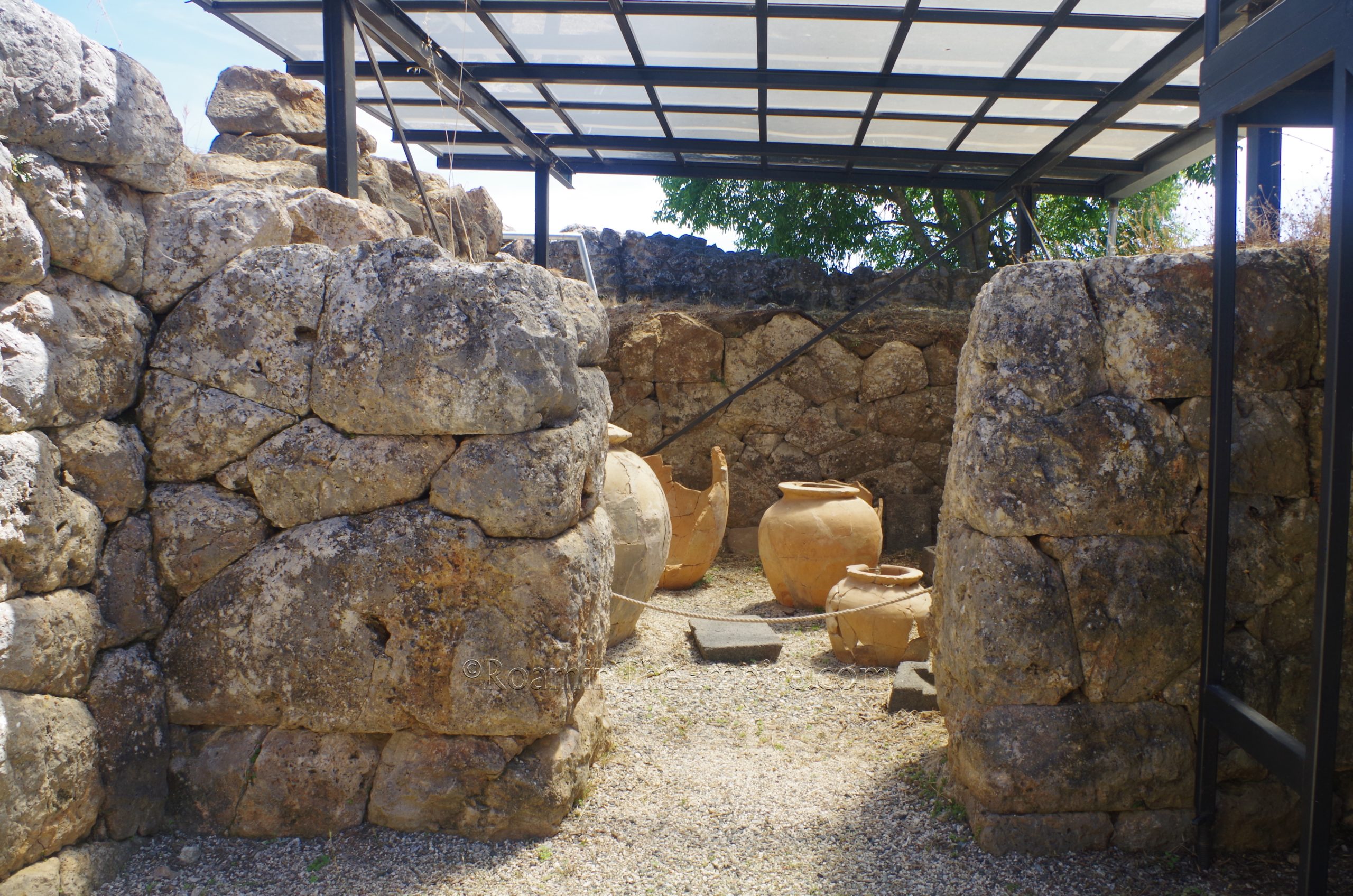
The Archaeological Site of the Necromanteion of Acheron is located just to the east of the modern village of Mesopotamos. The official parking area is located down in the center of town, as some of the roads leading up to it through town seem to limit traffic that isn’t local. But it’s not too far a walk up the hill to the site. The Necromanteion is open daily from 8:00 to 20:00. Admission is 6 Euros.
The Necromanteion is not an exceedingly large site. The 18th century church still remains built over a significant portion of the archaeological remains, and during the construction of the church, most of the standing structure of the Hellenistic structure were backfilled and the church was constructed atop. Since then, the Hellenistic remains have been excavated around the church. The Hellenistic building is essentially square and mostly consists of a number of rooms that aren’t really distinguishable from each other in any sort of meaningful way. The walls below the ground level of the church, though, are impressively preserved in some places and do give a nice example of the Hellenistic polygonal block construction.
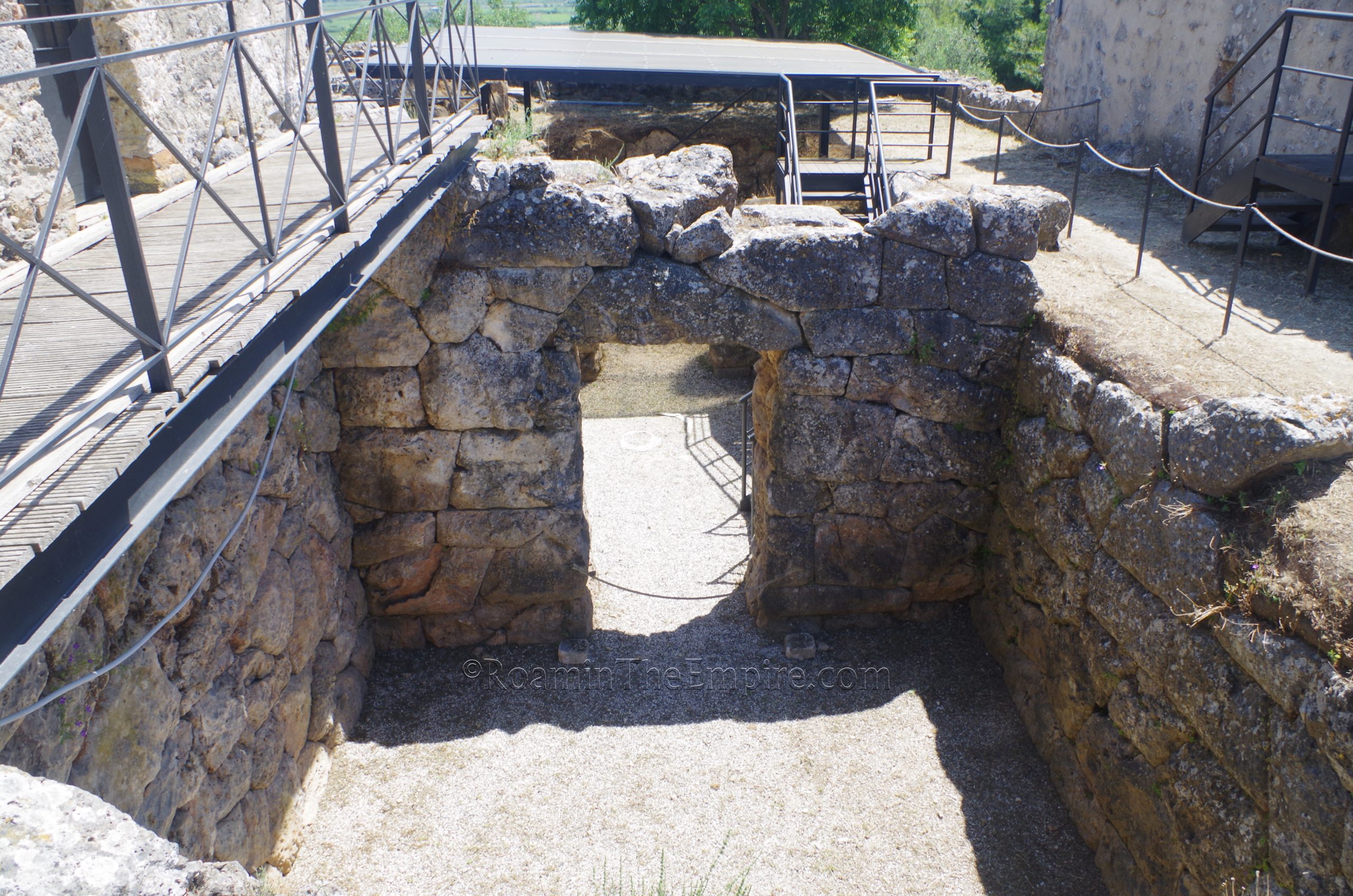
The second half of the visitor route around the site (it is not guided, but the route is essentially one-way; though I’m not sure if that was a specific pandemic protocol or not) descends into the core of the structure, a series of rooms that are now below ground level but were once the main level of the Hellenistic building. The roughly 21 x 21 meter square core is bounded by especially robust walls. Among these rooms is a main hall flanked by a series of rooms that are described as being storage areas, where a number of storage containers with traces of various staples such as wheat, barley, beans, and grapes were found and in which some are still displayed. Beneath this main hall, however, is a subterranean room that seems to have been sealed up at some point during antiquity.
The approximately 15 meter long and 4 meter wide chamber is hewn out of the rock and the roof is supported by a series of limestone arches. It is this space that is sometimes described as being a cave related to the oracle of the underworld or some sort of space associated with the worship of the chthonic deities. It certainly fits the part. It could also be some sort of cellar storage area as well, or perhaps even a cistern. Unfortunately there doesn’t seem to have been enough archaeological evidence found in this area to make any sort of conclusive determination of its use.
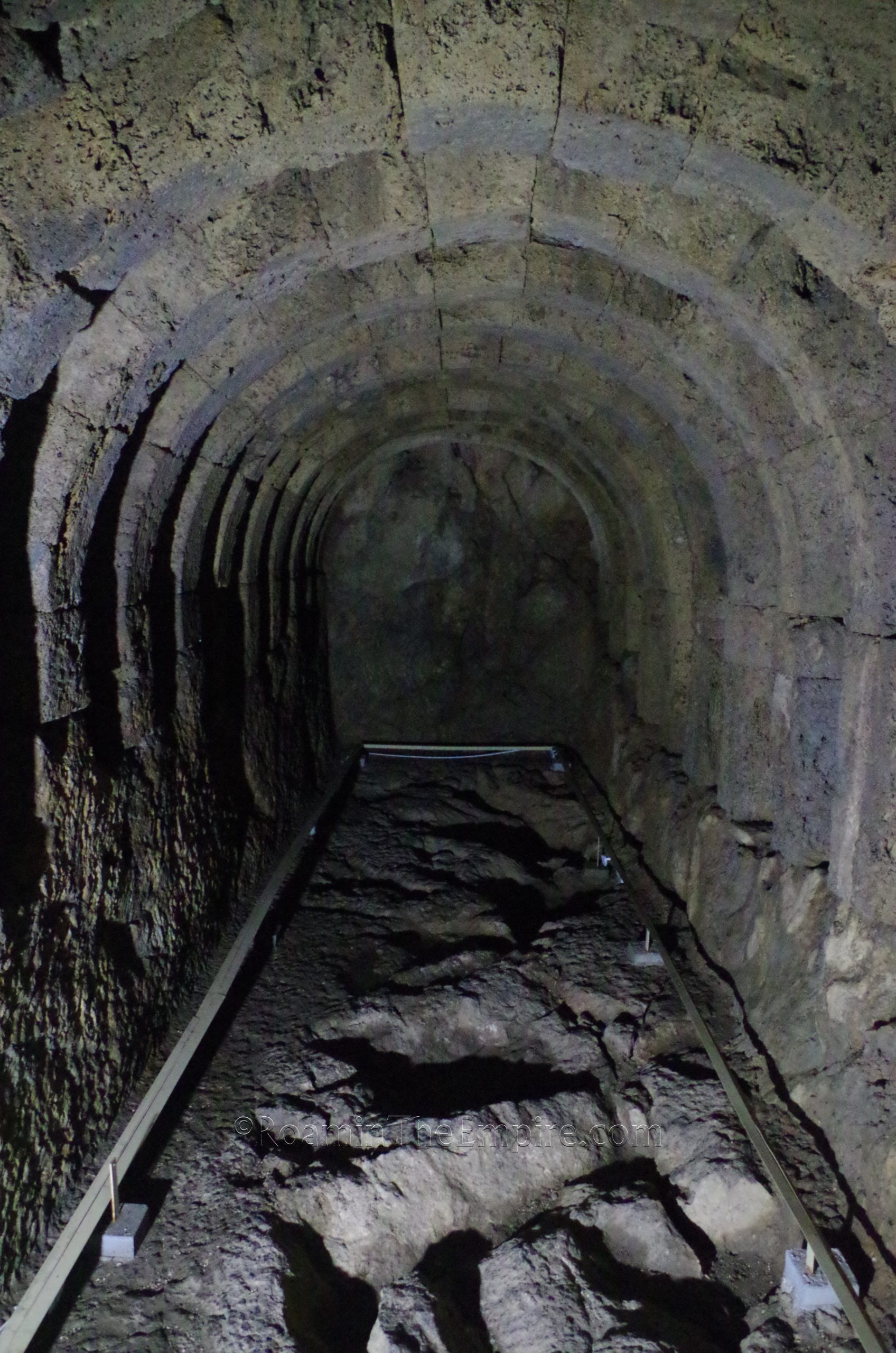
The Necromanteion is not an especially large site, it only took me about a half an hour to visit, and that included a walk around the nature trail that loops around the hill a little below the archaeological area. There are a number of signs in Greek and English with diagrams and pictures. Again, the information on site does lean pretty heavily toward the Necromanteion theory, even if that seems to have fallen somewhat out of favor with more modern analysis. In any case, it is still an interesting site worth a stop.
The next site isn’t quite as exciting nor controversial, and it’s really a bit off the beaten path. About 45 minutes away, near the village of Stroggili among the Amvrakikos Wetlands National Park on the Ambracian Gulf, are the remains of a Roman villa rustica; the Archeologikos Choros Agrikia Romaikon Chronon. Be aware that plotting this site on Google Maps, for some reason it usually routes an approach from the east via Agios Spirodon, rather than the much quicker western approach through Stroggili. The reason may be that sometimes the road is gated about 300 meters below the site, though it wasn’t when I visited. Beyond that, though, the site is not regulated at all. There is a fence with an unlocked gate to keep the animals out (there were a number of cows roaming around the area), but it can be visited at any time.
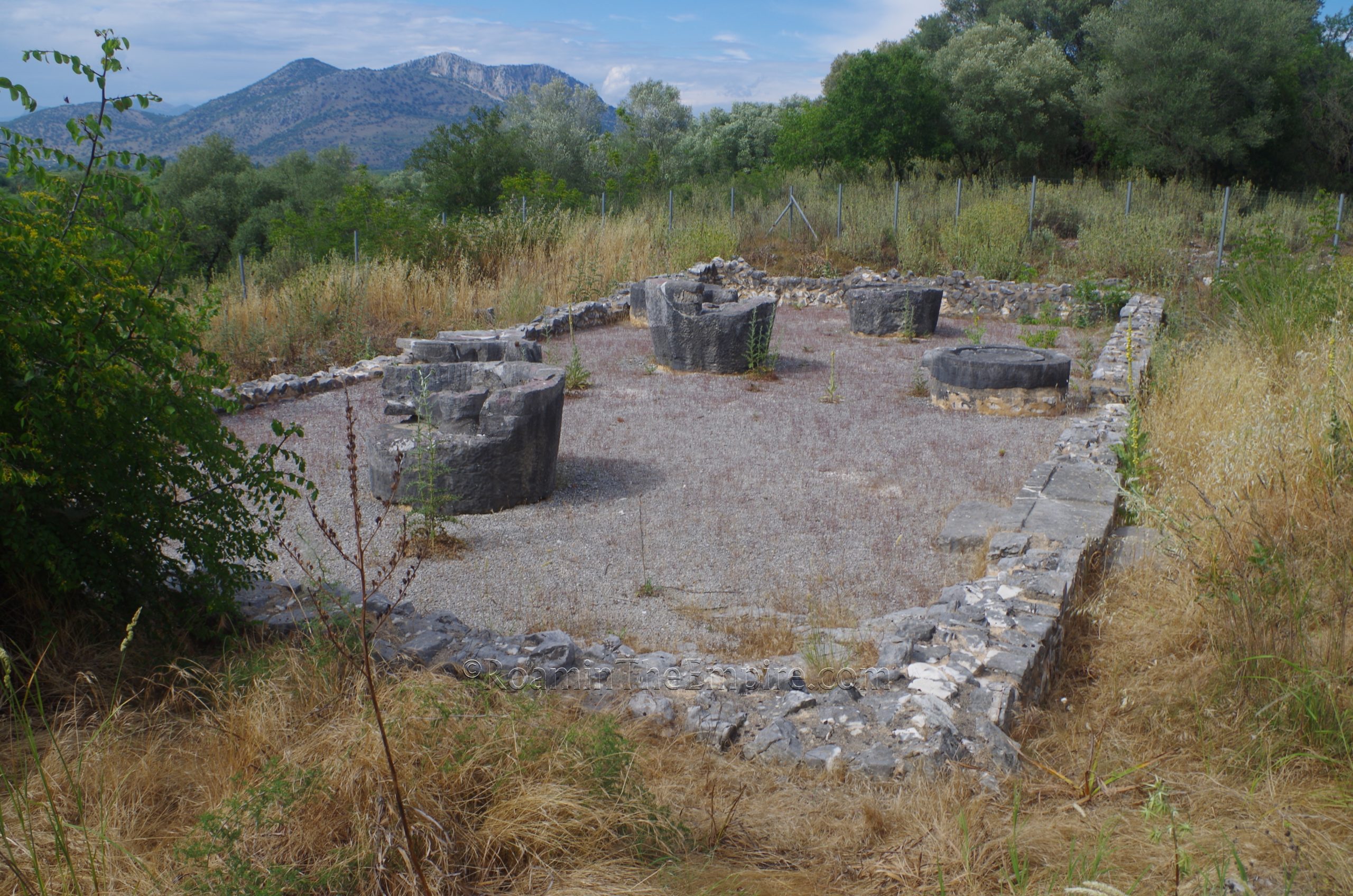
There’s not a whole lot to see here; coming from the west, the first thing encountered is an olive press area with a cocciopesto floor. There are remains of 3 mills and 3 presses. About 55 meters to the east are another set of remains, a circular structure (that may or may not be ancient; unfortunately there isn’t a lot of information available on this site) and some walls from an octagonal structure next to it. The octagonal structure seemsto be associated with a bathing area. There are, according to signs, some remains further north, but, I followed the path in that direction for a few minutes and didn’t come across anything. There are apparently some overgrown excavations covered by sheet metal roofs about 250 meters northeast of the olive press, but several fences need to be traversed to get to this area. The villa had building phases between the 1There is a relatively new looking informational sign in Greek and English near the olive presses.
About 200 meters back down the road to the west, however, there are the remains of a bridge; a single arch that definitely looks like it could be of Roman construction. Once again, I could find no information on the exact nature of the bridge. In all, the site isn’t much and, for most people, is probably not really worth the detour. It’s not far off the path I took that followed the aqueduct, though, so it could be a quick side trip when doing that.
Sources:
Herodotus. Historiai, 5.92.
Homer. Odyssey, 10.513-530.


